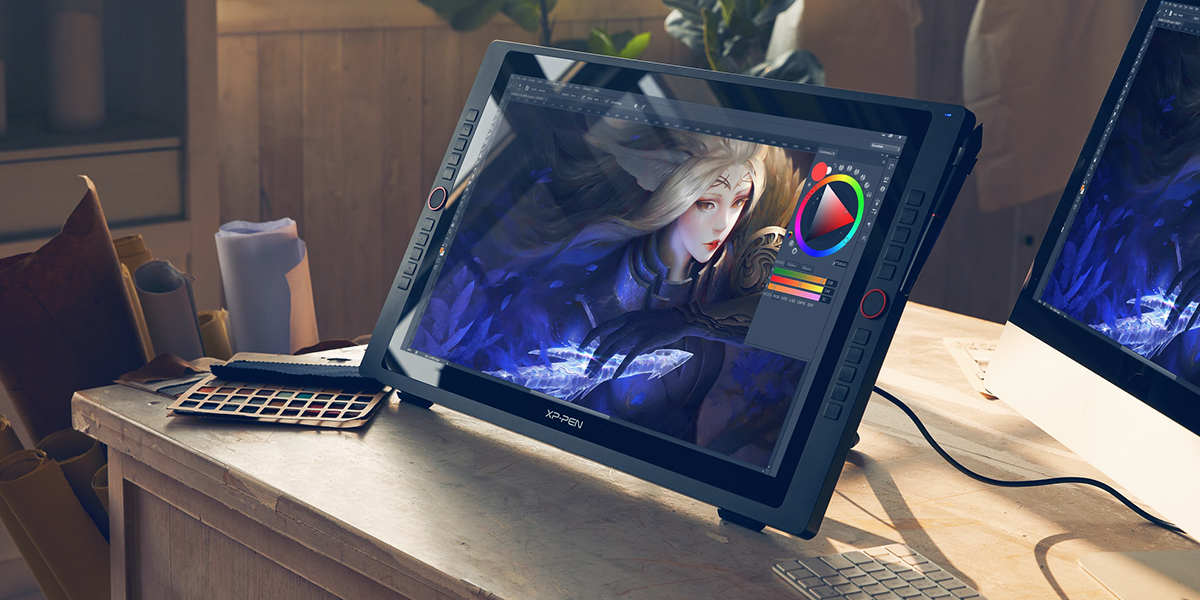An industry standard is an established norm or requirement in a particular area of business. In the professional creative industry, knowledge of and proficiency using the Adobe Creative Cloud products is quite sought-after in new hires.
Artists these days are expected to know how to use Adobe software inside and out. But, why is that?
The Adobe Success Story
In 2003, Adobe released a software bundle called the Adobe Creative Suite (CS). It consisted of professional software tools for graphic design, video editing, and creating web development applications.
Before the suite's release, founders John Warnock and Chuck Geschke brought attention to Adobe with products like PostScript, Photoshop, and Acrobat. They formed a three-way partnership with Apple and Aldus. Each of the three companies tailored their product(s) to highlight the strengths of one another.
Adobe's line of multimedia software, Aldus' Pagemaker (a word and graphics manipulator), and the Apple Macintosh computer were the front-running trifecta of tools for digital image production at the time. Although no longer partners, Adobe and Apple products still work well together to this day.
Creating the PDF
It wasn't too long ago that in order for you and your friend to be able to view the same file the same way, you both had to have the same computer. A document sent on a Windows computer didn't quite look the same on a Mac or in MS-DOS.
File sharing was a nightmare until 1993, when Warnock and Team Camelot created the PDF, or Portable Document Format.
The PDF was the first file format able to store and share text and images in a way that preserved the formatting of the original document. It didn't matter where you viewed the file, it always looked the same. This was revolutionary at the time.
What's more impressive is that the PDF is still widely popular to this day. Technology and business necessities evolved, so Adobe rightfully made sure that its new file type evolved with it. From editing and form functionality to web display and e-signatures, PDFs have never lost their relevance since their introduction.
Buying Out the Competition
As Adobe grew, so did the list of its acquisitions. At the time of writing, Adobe has acquired 52 other services/companies. Some of the most notable acquisitions include Typekit (now Adobe Fonts), Fotolia (now Adobe Stock), and Allegorithmic, makers of the Substance 3D design tools.
One of the game-changing acquisitions took place in 2005, when Adobe acquired a fellow software company, Macromedia, in a stock swap valued at approximately $3.4 billion. Up until the acquisition, Macromedia was beginning to seriously challenge Adobe with an interactive multimedia-authoring tool, called Director.
Macromedia's other core applications (namely Flash, Dreamweaver, and Firework) merged with CS as a result. Adobe took tools and functions from Macromedia's products and used them to fill in everything its own lineup had previously lacked.
From Creative Suite to Creative Cloud
Adobe stood at the top of the multimedia software mountain alone, and it would stay there for years to come. The company would release a new major CS update every one to two years until the 2013 Adobe MAX conference. It was there that Adobe announced that it was rebranding the suite as Creative Cloud (CC) instead.
Additionally, feature updates from then on were only made available through its subscription service. Up to this point, customers were purchasing perpetual licenses. The implementation of Adobe's new cloud model was met with significant criticism. Despite that, it is still in place for CC to this day, and is widely successful.
According to Adobe's December 2020 Financial Analyst Meeting, the CC business has grown around 85 percent in the past three years. Adobe reported a company record of almost $13 billion in revenue for its 2020 fiscal year.
Adobe's Impact on the World of Multimedia
Keeping revolutionary scientists in mind, American mathematician Richard Hamming once said: "True greatness is when your name is like ampere, watt, and fourier—when it's spelled with a lower case letter.”
In a similar fashion, perhaps you could say that the mark of a successful company is when its name can be used as a verb. Think about it.
With the world going digital at every opportunity, instead of looking something up, you Google it. You don't photocopy important documents—you Xerox them. And finally, instead of editing a digital photo, you "Photoshop" it.
Remember when skill in Photoshop, Illustrator, and InDesign was a "preferred" or "extra" requirement for graphic artists? Now, it's a necessity for anyone who wants to work in a professional creative space. Moreover, there are schools all around the world that teach students how to use CC programs.
Will the Adobe's Reign Ever End?
With Adobe so deeply rooted in the growth of modern visual design, you can't help but wonder: will any new digital innovations replace CC as the industry standard? It's hard to imagine.
At present, there isn't another multimedia software bundle as universally recognized as CC. Adobe knows this too, which is why it can get away with charging a reoccurring premium for the use of its products.
Though it's worth mentioning that the "Affinity trinity" of programs by Serif has gotten a lot of attention online. This was especially true right after Adobe swapped business models. Newer artists desperately searched for a cheaper alternative.
Affinity Photo, Affinity Designer, and Affinity Publisher are all one-time purchases, and very similar to Photoshop, Illustrator, and InDesign respectively.
But if you want to avoid spending money altogether, check out our list of free-to-use Adobe alternatives.
Adobe: The Grandfather of Creative Software
Adobe is the industry standard because it's been at the top for a long time. It got and stayed there by continuously innovating.
While all the other competitors on the market are playing copycat, Adobe is laser-focused on ensuring its products remain professional, innovative, and easy-to-use. That said, CC has a hefty price tag because Adobe is well-aware that competition is slim to none.




